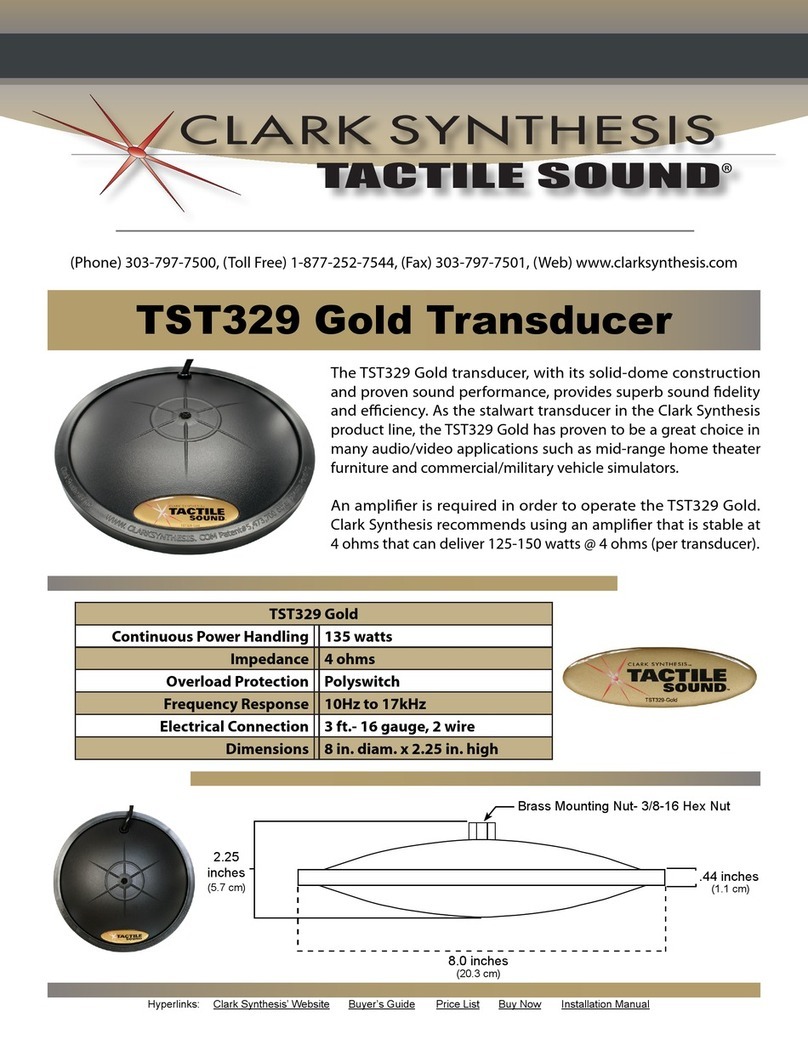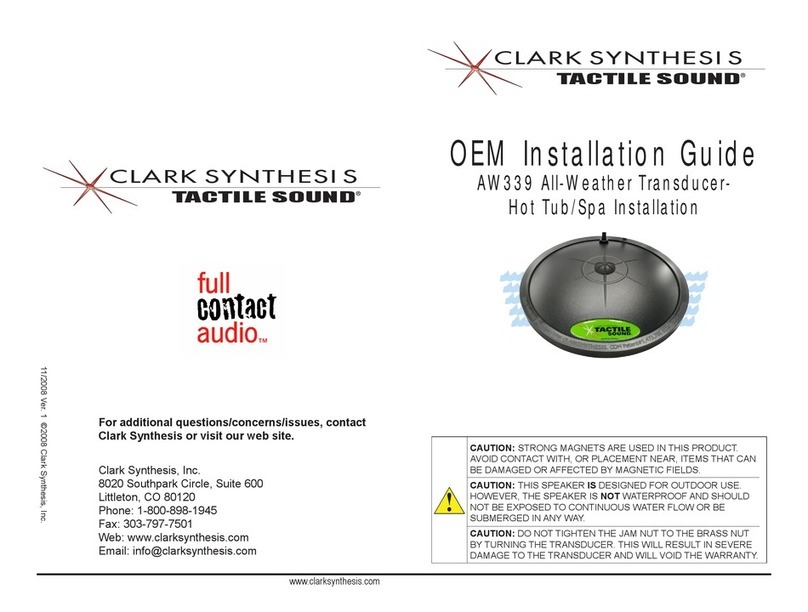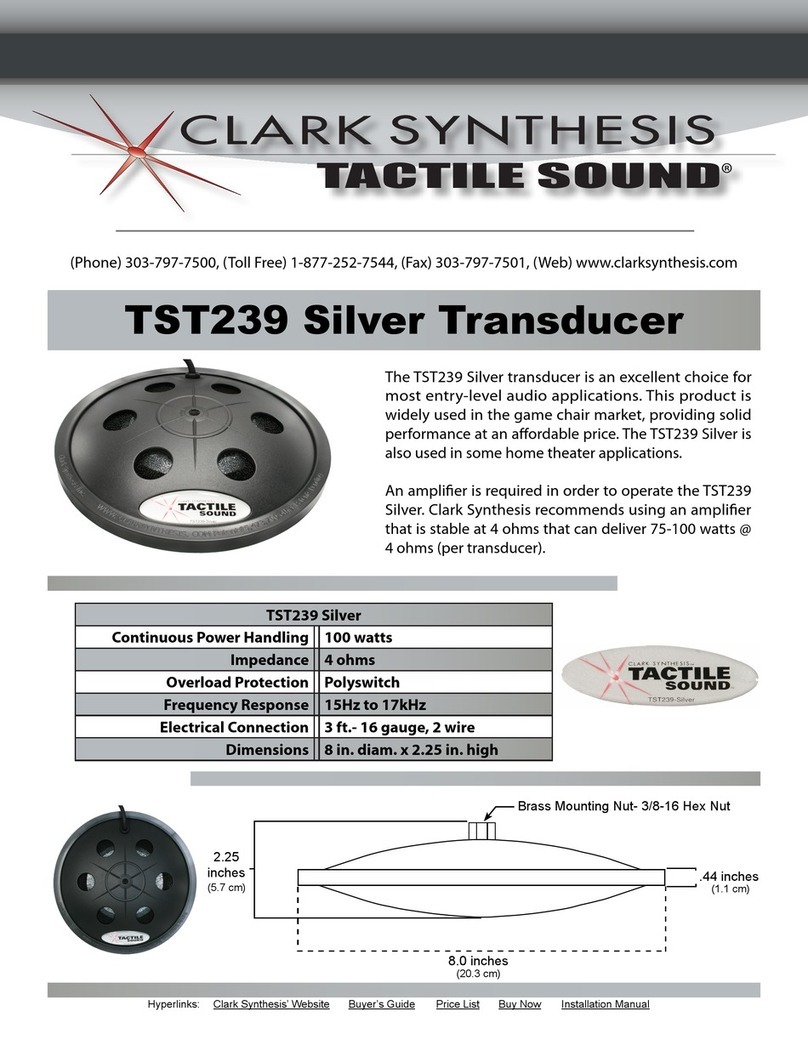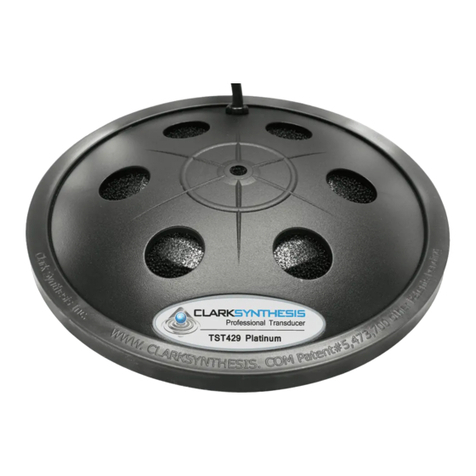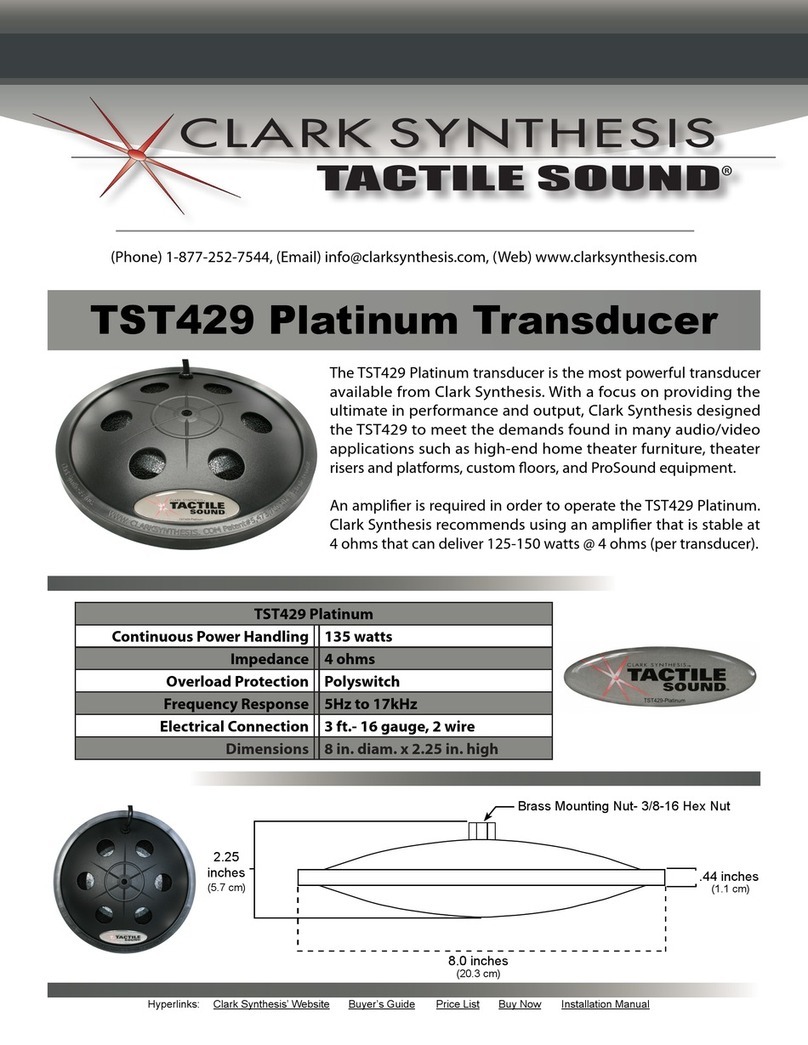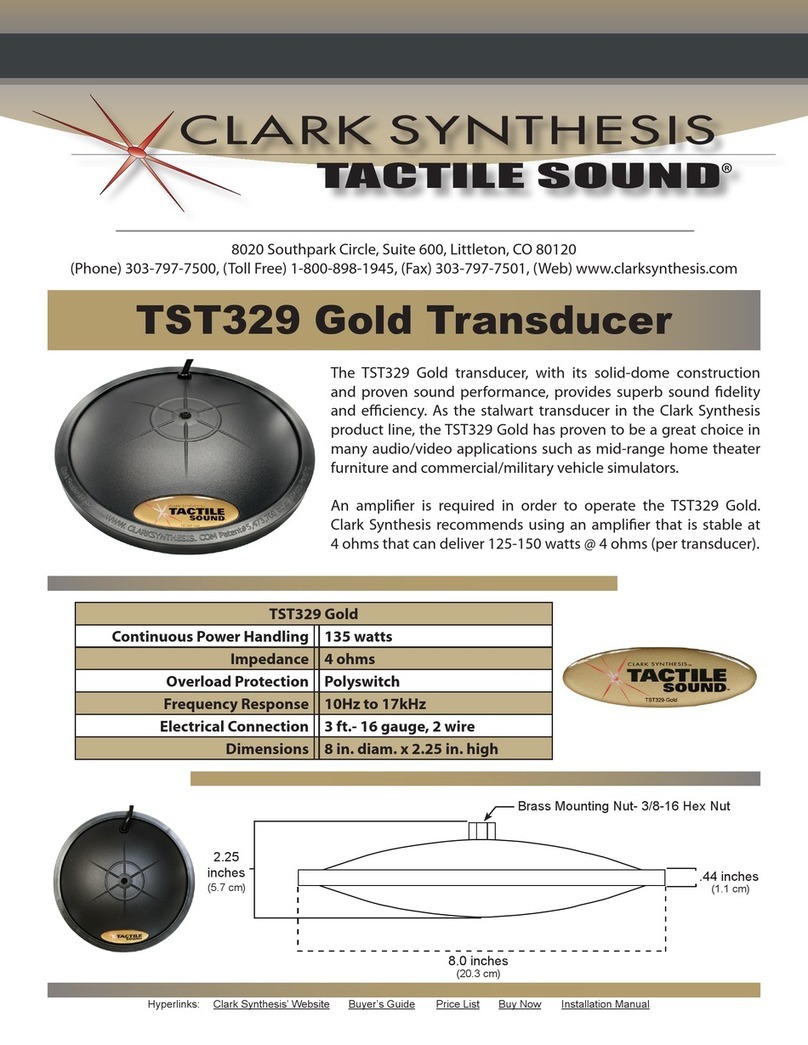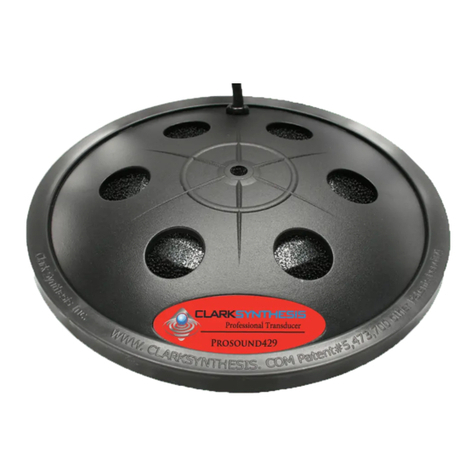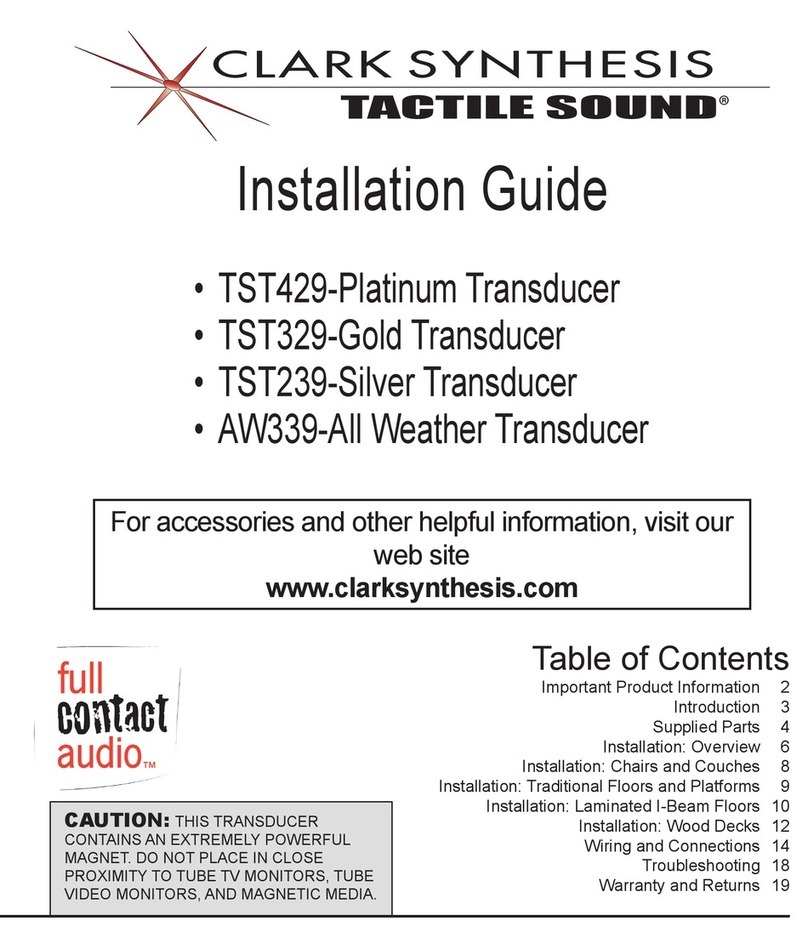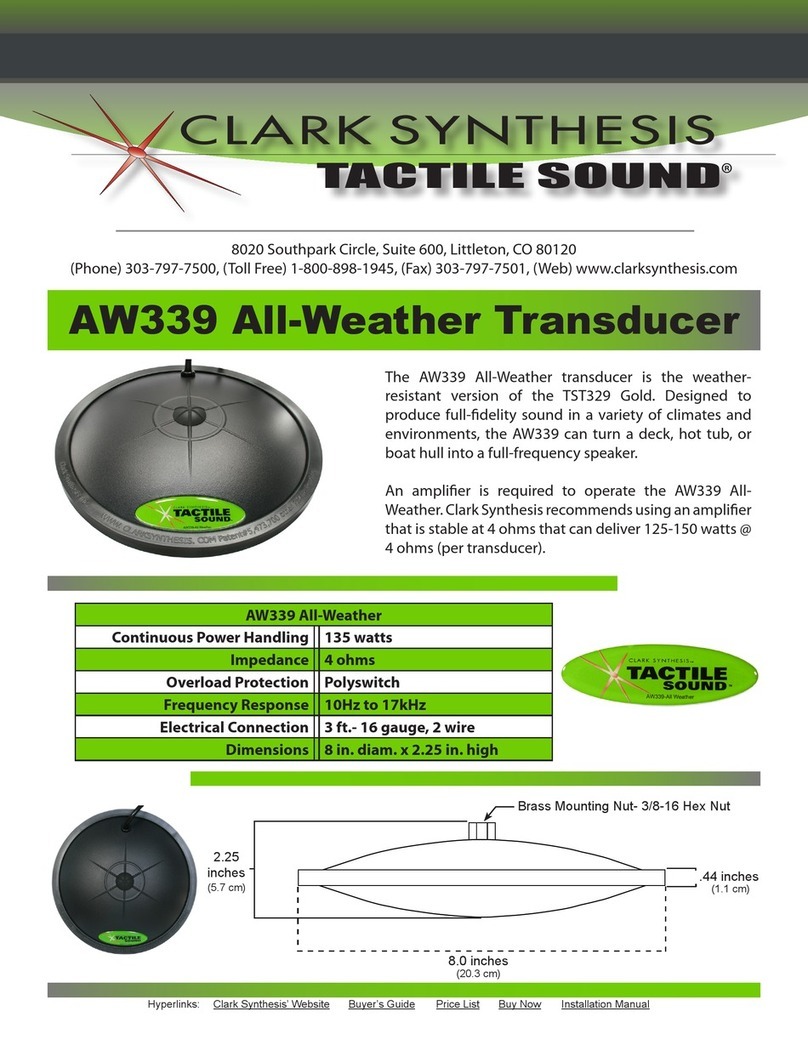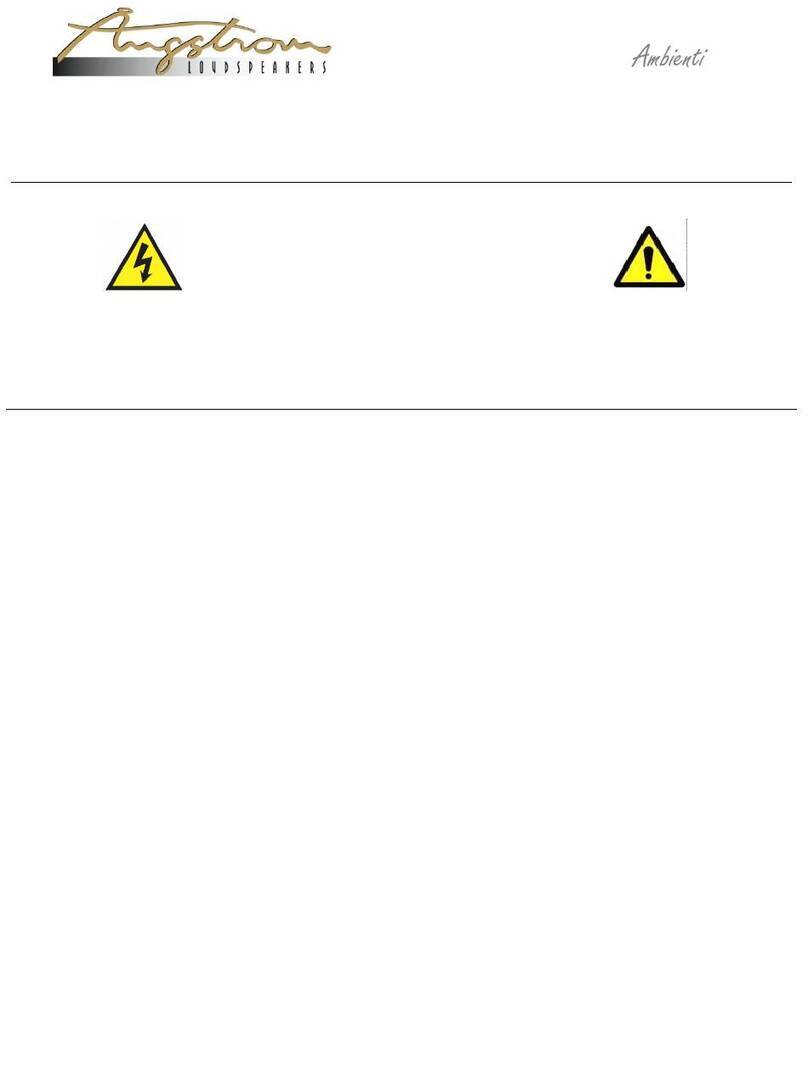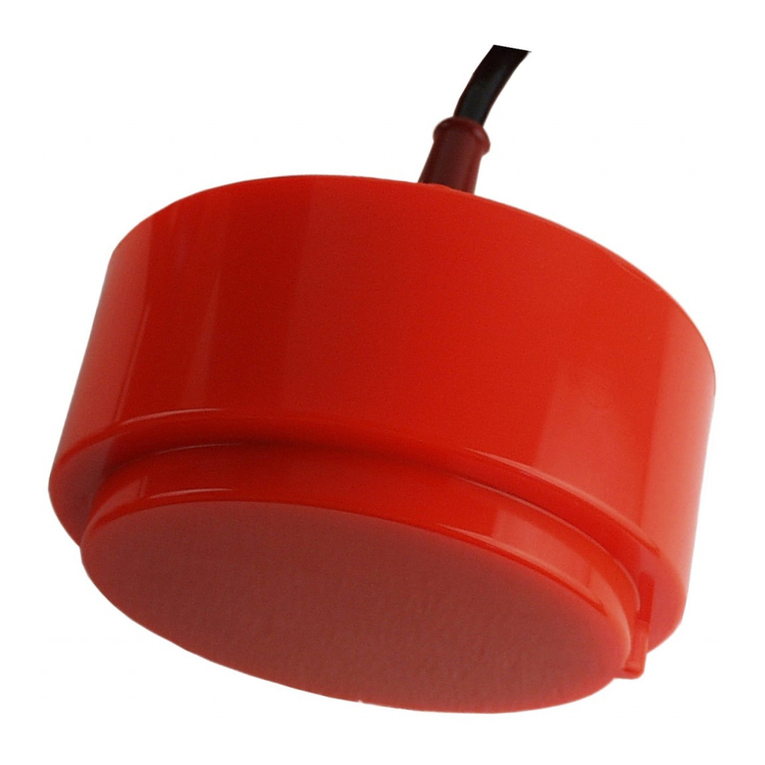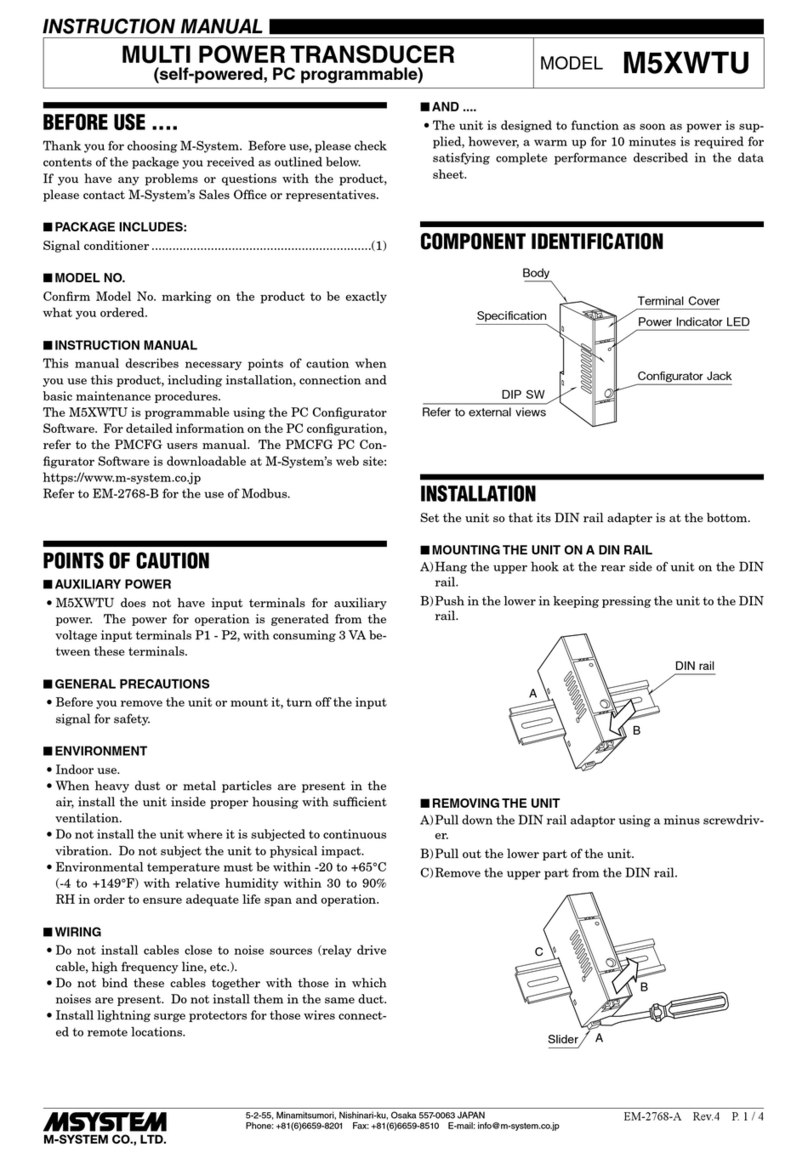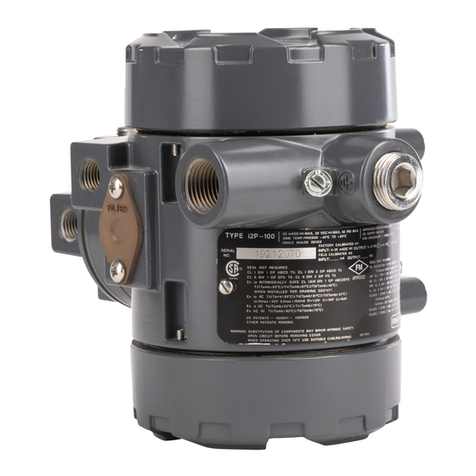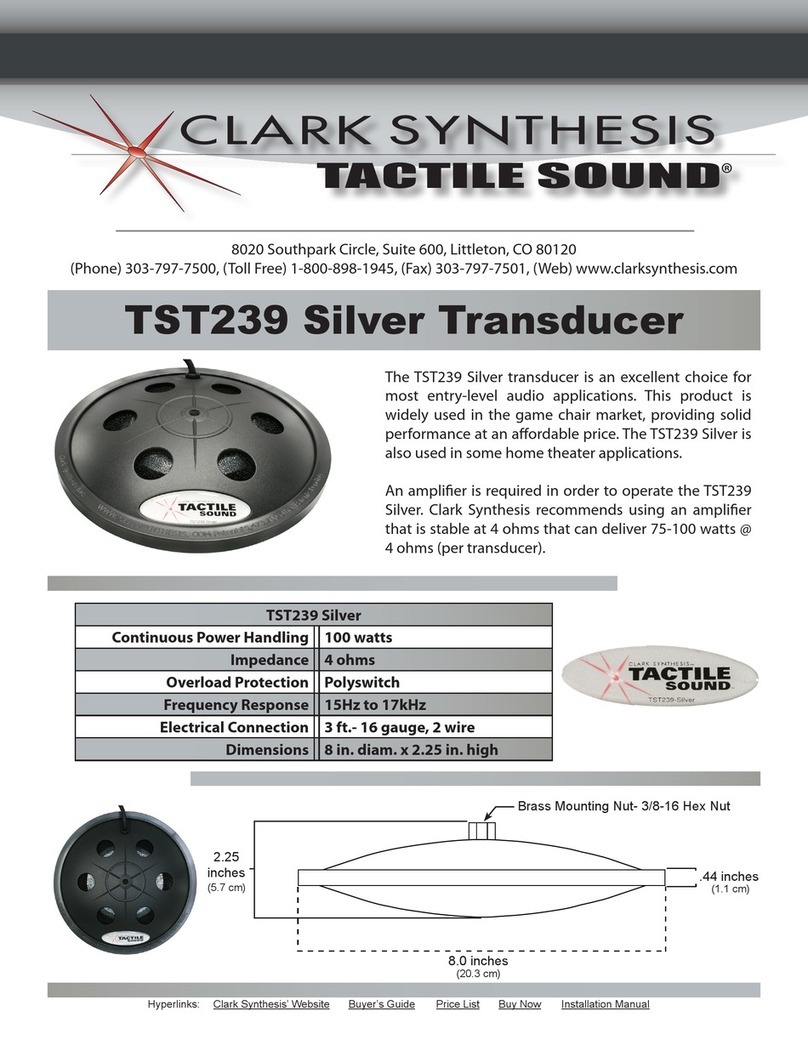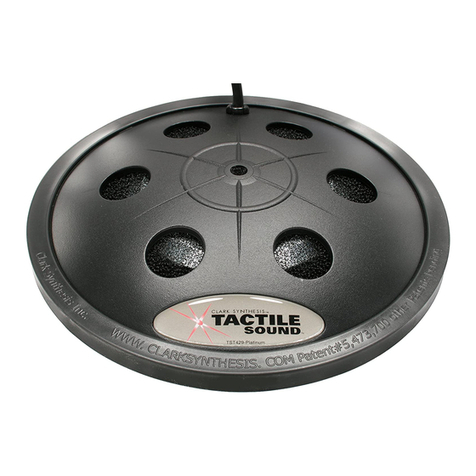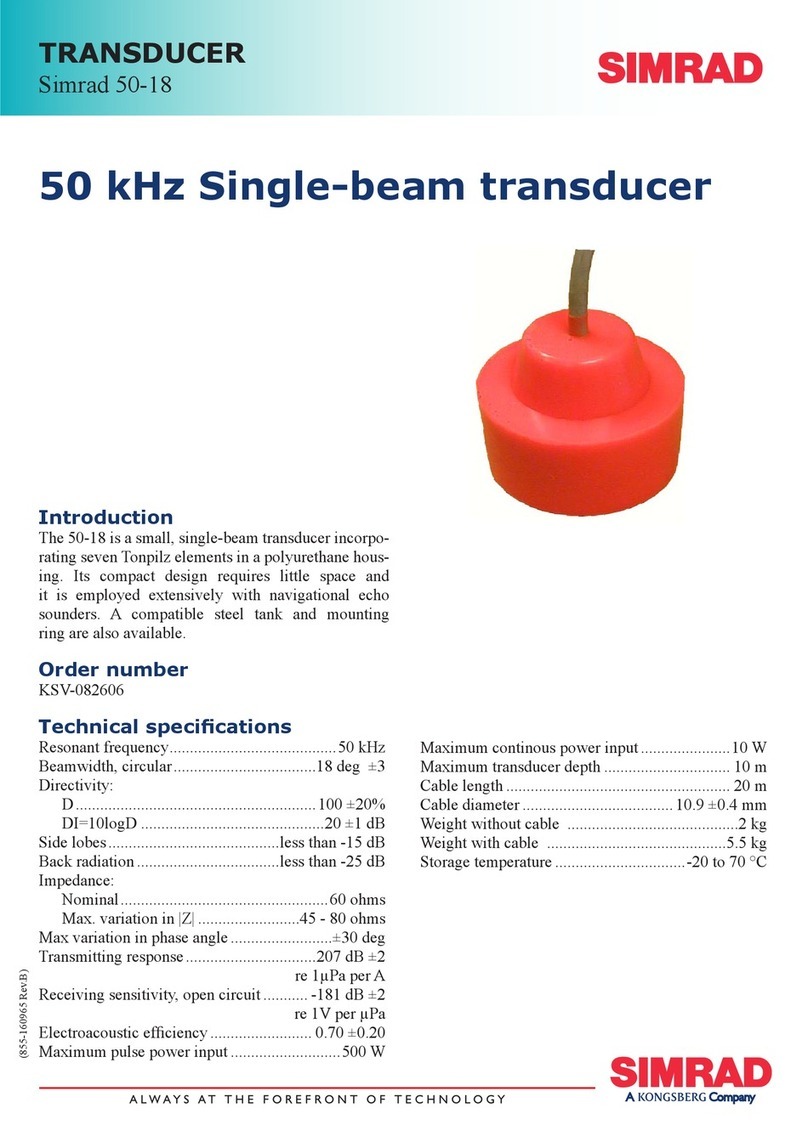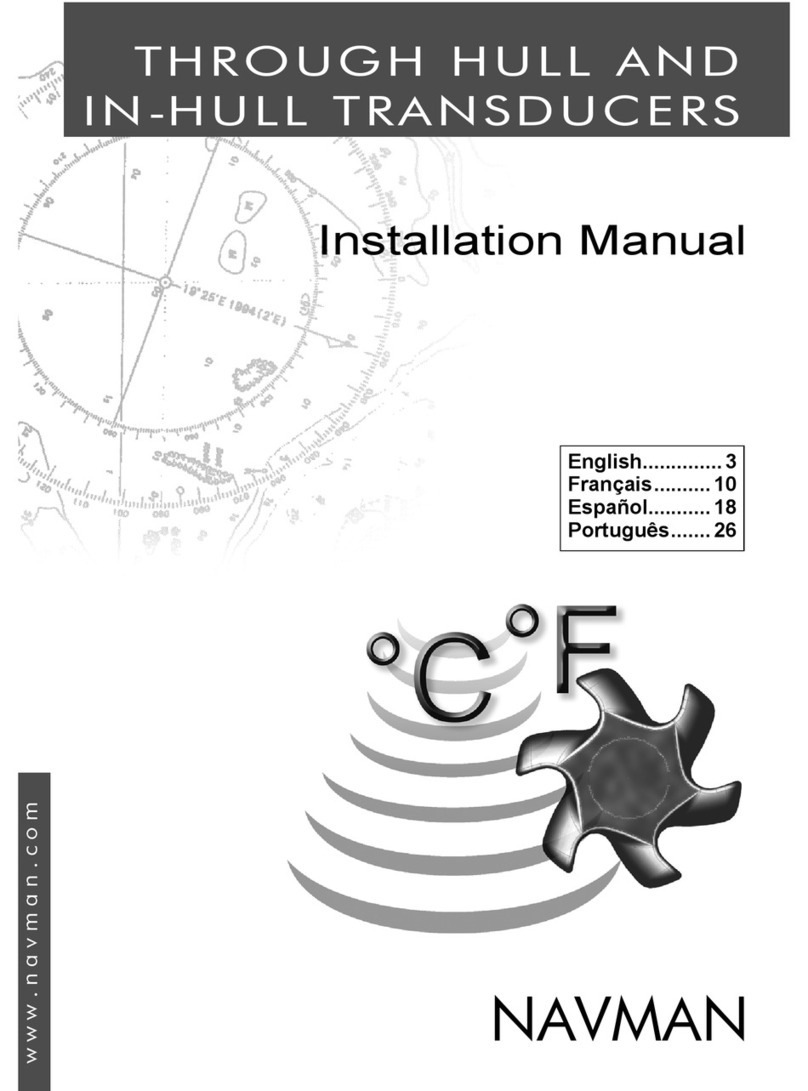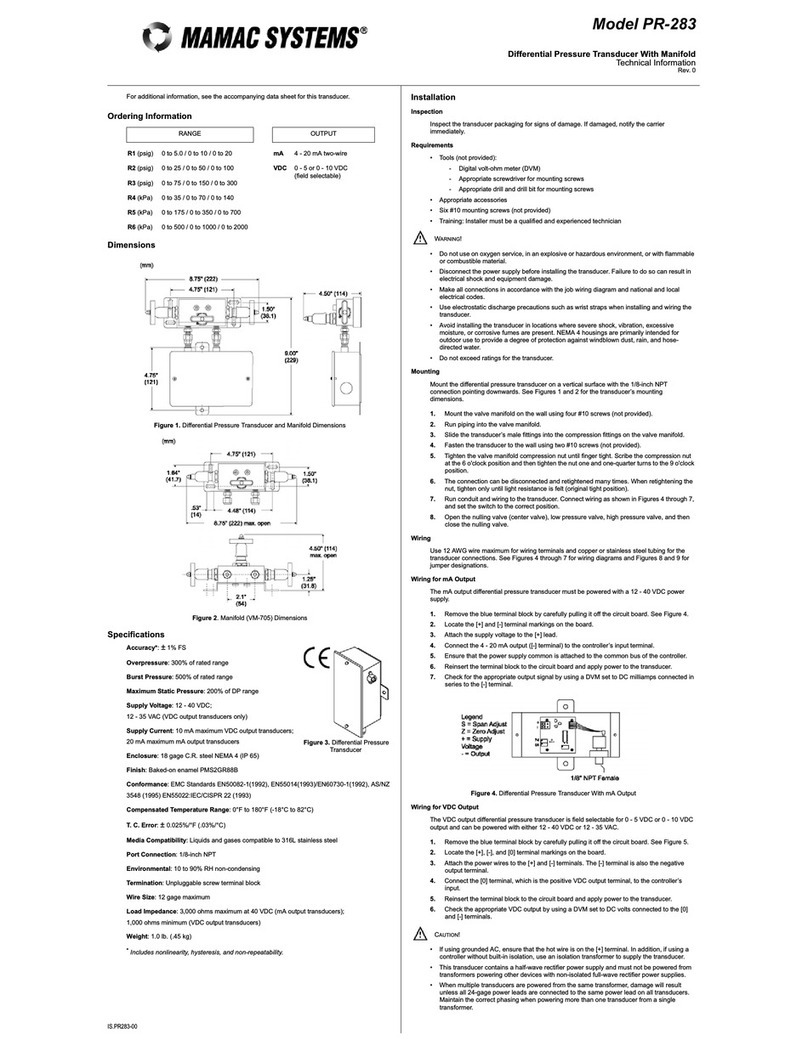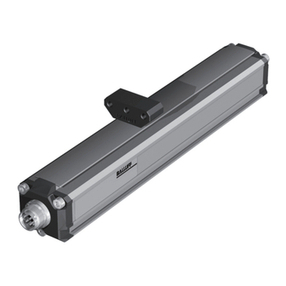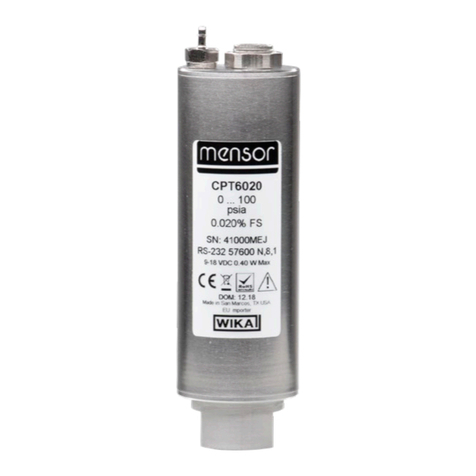
TST209 Transducerwww.clarksynthesis.com 3
INTRODUCTION
Thank you for purchasing a Clark Synthesis Tactile
Sound®Transducer, and welcome to the amazing world
of Tactile Sound!
For many years, Clark Synthesis has been giving
its customers the ability to experience sound in a
sound we hear reaches our ears via airborne vibrations,
like those produced by loudspeakers. However, there
are four additional pathways through which we perceive
acoustic energy, all of which fall into the category of
tactile sound. These additional pathways include:
• Deep tissue and muscle mass
• Skeletal Joints
• Skin Sensation
• Bone Conduction
To capitalize on these additional means by which we
perceive acoustic energy, Tactile Sound Transducers
have been designed to send high-quality audio to the
listener by producing vibrations over a full range of
tactile and audible frequencies. When attached to a
resonant surface, the Transducers supplement ordinary
proportion of tactile sound. Consequently, you feel the
natural percussive impact of sounds, bringing life to
enjoying greater clarity, depth, and realism.
Additionally, because Transducers increase the perceived
“loudness” of the sound you are hearing, you are able to
lower the volume on your system to a level that is both
safer for your ears and less bothersome to neighbors.
Some of the most common applications for Tactile
Sound Transducers include home theaters, listening
rooms, outdoor decks, military simulators, theme
park attractions, game chairs, professional music, and
swimming pools.
In home theaters and listening rooms, our
Transducers provide the user with a greater depth
of experience when watching movies, listening to
music, and playing video games.
For outdoor applications, our AW339 & AW429
All-Weather Transducers mount underneath decks,
keeping the audio equipment out-of-sight while
transferring audio to the surface of the deck.
TST329 Gold Transducers to bring a greater sense of
realism to training exercises.
Pool enthusiasts use our AQ339 Diluvio™ Underwater
pool speakers to send full-range audio into the water,
providing high-quality underwater music.
As you can see, the uses for our Transducers are
many and the experience is amazing! We are glad
you chose Clark Synthesis Transducers and we hope
your listening experience takes you to new levels of
acoustical enjoyment!
Before you drill holes and run wires, take a few moments to review this Installation Guide.
Then plan out the steps you’ll need to take for your particular application. This will save you
time in the end and reduce the possibility of errors and/or damage to the Transducer.
















